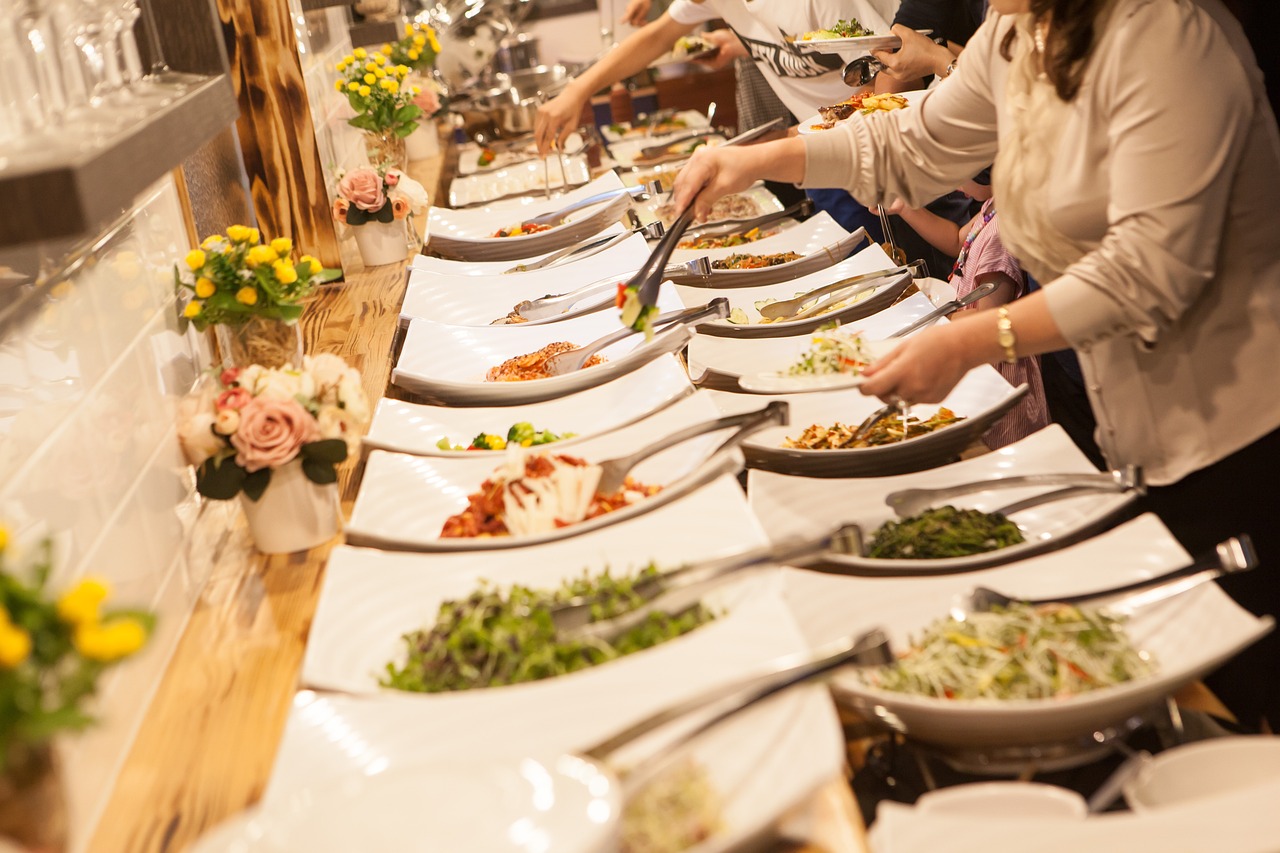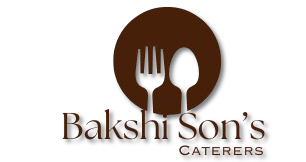Savor Every Bite, Celebrate Every Moment”

- Catering is an art form that involves not just the preparation of food, but also the seamless integration of various services to create an unforgettable experience for guests. Whether you’re planning a wedding, a corporate event, or a small intimate gathering, catering is crucial for setting the right tone and ensuring everyone enjoys the occasion. This guide will take you through everything you need to know about catering— from the basics of selecting a caterer to executing a flawless event.

Coctail
Food truck catering has become increasingly popular, offering a fun and casual alternative to traditional catering services. A food truck provides a variety of meals on-site, allowing guests to order directly from the truck. It’s a great option for outdoor events, festivals, and casual gatherings.
 CATERING
CATERING

1. What is Catering?
Catering refers to the provision of food and drink services for events, often involving professional services to prepare, deliver, and serve food at off-site locations. It can also extend to in-house catering where an event is hosted at a restaurant or venue offering full food services. Catering isn’t just about the food; it also includes planning, preparation, serving, and sometimes even decorating the venue. Caterers also manage the logistics, the timing of food delivery, and the overall ambiance of the event.
2. Types of Catering Services
Catering can be broken down into several types, depending on the nature of the event and the style of service. Here are some common types:
a. Buffet Catering
A buffet is a self-service meal where guests can choose their own food from a spread of options. Buffets are ideal for large events because they allow guests to serve themselves and create their own portions. A buffet can range from a casual style, with finger foods and snacks, to an elaborate spread with multiple courses and dishes.
b. Plated Catering
In plated catering, guests are served individual portions of food directly at their tables. This style is more formal and typically seen at weddings, gala dinners, and corporate events. Plated service requires a higher level of coordination and staffing, as each guest receives a personalized dish.
Family-style catering involves large dishes of food placed in the center of each table, where guests serve themselves. It’s more informal than plated service but still requires careful portion control. This style creates a sense of community and sharing among guests.
3. How to Choose the Right Catering for Your Event
Choosing the right catering service for your event can be overwhelming, but a few key considerations can make the process smoother. Here’s what to think about:
a. Know Your Guest List
The number of guests you’re hosting will largely dictate the style of catering you choose. A large event will need a caterer with experience handling large numbers of people, while a smaller event may benefit from a more intimate, personalized service.
b. Consider Your Budget
Catering is one of the largest costs associated with hosting an event. It’s important to establish a budget early on and work with a caterer who can provide options within that budget. Keep in mind that the cost can vary based on the type of service, menu complexity, location, and the level of staffing required.
c. Dietary Restrictions and Preferences
Consider any dietary restrictions your guests may have, such as vegetarian, vegan, gluten-free, or allergy-sensitive needs. A good caterer will offer a variety of options and be flexible in accommodating special requests.
d. Event Theme and Atmosphere
Your catering style should align with the theme or atmosphere of the event. A formal event like a wedding may require a plated dinner, while a casual, outdoor event could work better with a buffet or food truck.
e. Experience and Reviews
Research potential catering services, checking reviews and asking for recommendations. A caterer with a good reputation and experience in similar events can be trusted to handle the logistics and execution effectively.
4. Creating a Menu: What to Serve
The menu is the most important element of catering, and it’s essential to curate a selection of dishes that will please your guests and fit the occasion. When creating a menu, consider the following factors:
a. Event Type
For a wedding, you might want a more sophisticated, multi-course meal, while a corporate event could benefit from a simple buffet or hors d’oeuvres. Make sure the dishes you choose align with the formality and timing of the event.
b. Variety
Offer a variety of foods that cater to different tastes and dietary restrictions. Include options for meat-eaters, vegetarians, and those with allergies. You can also consider international dishes or regional favorites to give the menu a unique flair.
c. Seasonality
Seasonal ingredients are not only fresher and more flavorful but also more affordable. Tailor your menu to the season by selecting dishes that showcase in-season fruits, vegetables, and meats.
d. Presentation
How the food is presented can have a big impact on the experience. Consider the aesthetics of the food, from garnishes to plating. Buffets and family-style meals can be beautifully arranged to add visual appeal, while plated dinners will require careful attention to portion size and garnish.
e. Portion Control
Catering is all about balancing portions to ensure every guest has enough without too much waste. Caterers should work with you to estimate appropriate quantities based on your guest count, factoring in the type of service and the number of courses being served.
5. Managing the Logistics
Once the menu is decided and the caterer is booked, managing the logistics of the event becomes the next crucial step. A successful catering service requires careful planning, precise timing, and coordination.
a. Timing is Everything
Catering is all about timing. Whether food is being served buffet-style, plated, or in another format, the dishes must be ready to go when your guests are. Caterers usually arrive several hours before the event begins to prepare the food, set up, and ensure everything runs smoothly.
b. Staffing Requirements
Make sure to arrange adequate staffing based on the size of your event. This may include servers, chefs, bartenders, and cleanup crews. A professional catering company will be able to determine staffing needs based on the event’s size and catering style.
c. Venue Considerations
The location of your event plays a large role in how the catering is handled. Ensure that the venue has the appropriate facilities (e.g., kitchen space, power sources, seating arrangements). If your event is held outdoors or in a non-traditional venue, you may need additional equipment, such as generators, heating, or cooling systems.
d. Transportation and Equipment
Food must be delivered on time, hot, and fresh. If the event is at a distant location, your caterer will need to plan the logistics of transporting the food safely. Additionally, ensure that your caterer provides the necessary equipment, such as tables, chafing dishes, serving utensils, and linens.
6. Special Considerations for Large Events
Catering for large events (such as weddings or corporate functions with 100+ guests) requires additional attention to detail. Here are a few things to consider when handling large-scale catering:
a. Pre-Event Tastings
Before the event, schedule a tasting session with the caterer to sample the menu. This is crucial for ensuring the quality of the food, confirming any last-minute adjustments, and allowing you to give feedback on presentation.
b. Multiple Course Menus
For large events, especially weddings or formal galas, a multiple-course menu can elevate the dining experience. However, it’s important to ensure the timing between courses flows smoothly and doesn’t overwhelm the guests.
c. Logistics Planning
For events that require different serving stations (e.g., a carving station or a dessert bar), the logistics become more complex. Proper signage, clear pathways, and staff to guide guests through these stations can enhance the flow and make sure everyone gets served in a timely manner.
d. Handling Food Waste
Large events often result in food waste, which is something you should plan for. Work with your caterer to minimize waste by accurately estimating the amount of food needed and possibly donating leftovers to local charities after the event.
7. Catering Trends and Innovations
The catering industry is always evolving, and today’s catering trends reflect changing tastes, technological advances, and cultural shifts. Here are a few trends to keep an eye on:
a. Sustainable Catering
More and more caterers are adopting sustainable practices, such as using locally sourced, organic ingredients, reducing food waste, and offering eco-friendly packaging. Sustainability is a growing concern among consumers, and choosing a caterer who aligns with these values can enhance your event’s reputation.
b. Interactive Food Stations
Interactive food stations, like live cooking or sushi rolling stations, engage guests in the food preparation process. These experiences add a personal touch and create a memorable experience.
c. Custom Menus
Rather than offering a set menu, many caterers are now creating custom menus tailored to the preferences of the host and the guests. This can include a mix of different cuisines, dietary preferences, or personalized touches that make the event unique.
d. Technology Integration
With technology advancements, caterers are now using apps to streamline ordering and guest preferences. Some caterers offer virtual tasting experiences or use event apps to manage guest dietary restrictions and preferences.
Conclusion
Catering is one of the most essential aspects of any successful event. It is about far more than just food—it’s about creating an experience. From choosing the right menu to managing the logistics, catering plays a crucial role in ensuring that your event goes off without a hitch. By considering your event’s needs, budget, and guest preferences, and working with a professional catering service, you can create a seamless dining experience that leaves a lasting impression on your guests. Whether you’re hosting a wedding, corporate function, or casual gathering, the right catering service can elevate your event to new heights.
